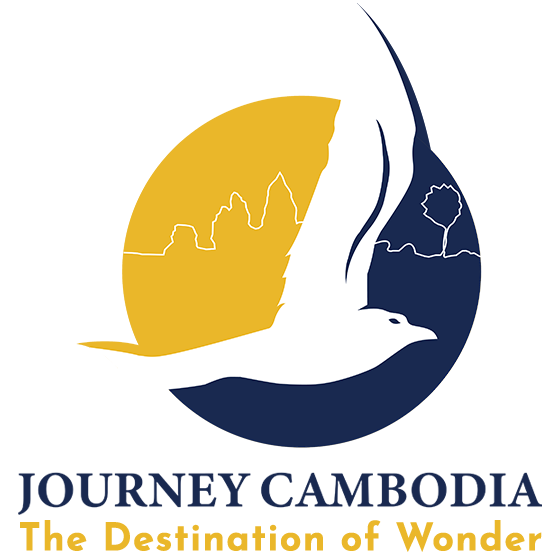Historical Sites in Phnom Penh – From royal secrets to dark prison walls, these spots aren’t just old—they’re unforgettable.
From royal secrets to dark prison walls, these spots aren’t just old—they’re unforgettable.
Phnom Penh holds amazing stories in its old buildings and places. The city’s historical sites in Phnom Penh mix beauty with sad tales, showing how much Cambodia has gone through. You’ll find royal houses next to places that remind us of hard times.
The Soul of Cambodia: Why Phnom Penh Matters
Cambodia sits in Southeast Asia, known for its rich past and friendly people. Most folks know about Siem Reap and the famous Angkor Wat temples. Phnom Penh, the capital city, has its own special charm and important historical sites in Phnom Penh that tell different stories.
Siem Reap shows ancient glory. Phnom Penh reveals recent history. These two cities give you a full picture of Cambodia’s journey through time.
Ready to see what makes Phnom Penh special? Let’s check out seven amazing historical sites in Phnom Penh that have lasted through good and bad times.
1. Royal Palace — Where Kings Still Walk
The Royal Palace stands tall in Phnom Penh, right by the river. King Norodom built it in 1866, and it’s still where Cambodia’s king lives today. Yellow walls mean royalty in Cambodia. They surround buildings with pointy roofs that shine in the sun.
The palace grounds have many parts to see:
- Throne Hall: This is where big royal events happen
- Moonlight Pavilion: An open area for dance shows
- Royal Treasury: Full of gifts from other countries
What makes this place special? You can see how Cambodian royal history lives on right now. The guards wear fancy uniforms. The buildings stay in good shape. This isn’t just an old place—it’s still working!
Want to visit? The Phnom Penh Royal Palace National Museum Half-Day Tour gives you a guide who knows all the stories behind the walls. They’ll show you things most people miss when walking around alone.
Good to know: Many parts stay closed to the public since the king uses them. Wear clothes that cover your shoulders and knees out of respect.
2. Silver Pagoda — Floor of Treasure
The Silver Pagoda sits inside the Royal Palace grounds but counts as its own amazing sight. Why “silver”? The floor has more than 5,000 silver tiles weighing about 6 tons! During special times, they remove rugs so visitors can see this shiny floor.
Inside, you’ll find:
- Emerald Buddha: A famous small green crystal Buddha
- Maitreya Buddha: A gold statue with 9,584 diamonds, one being 25 carats!
- Life-sized gold Buddha: Weighs 90 kg and wears 2,086 diamonds
The walls around the building show painted scenes from Khmer stories and the Ramayana epic. Even though the Khmer Rouge took or broke many treasures, what remains still amazes visitors.
This place mixes fancy art with deep faith. Monks still come here to pray, making it a living part of Cambodian cultural heritage rather than just an old building.
3. National Museum of Cambodia — Art That Lived
The National Museum of Cambodia looks like an old temple with its red color and fancy roof. Built in 1920, it holds the world’s best collection of Khmer art. French experts and Cambodians worked together to save and show these treasures.
Inside the cool, dark rooms you’ll find:
- Stone carvings from Angkor temples
- Bronze statues of Hindu and Buddhist gods
- Wooden objects that somehow survived Cambodia’s wet climate
- Everyday items showing how people lived long ago
The building wraps around a peaceful garden with fountains and flowers. This layout creates nice air flow in the hot city.
This place matters because it saved so many things that might have been lost forever during war times. When you walk through the Phnom Penh Royal Palace National Museum Half-Day Tour, guides point out how each statue or carving shows what Cambodians found important.
Visitor tip: Go early in the morning when it’s cooler and less crowded.
4. Tuol Sleng Genocide Museum (S-21) — School Turned Prison
Some historical sites in Phnom Penh tell hard stories we shouldn’t forget. The Tuol Sleng Genocide Museum started as a high school. The Khmer Rouge turned it into a secret prison called S-21 during their rule from 1975-1979.
Walking through the old classrooms feels heavy. Small brick cells, rusty beds, and black and white photos of prisoners line the walls. Nearly 20,000 people came here. Only a handful survived.
The museum shows:
- Prisoner photos taken when they arrived
- Torture tools left by the Khmer Rouge
- Paintings by one survivor showing what happened
- Documents explaining why this dark time matters
This place helps stop such things from happening again by teaching about them. It’s part of the Phnom Penh Heritage and History Tour which helps visitors understand Cambodia’s recent past.
Be prepared: This site shows very sad parts of history. Some photos and displays might upset young children or sensitive visitors.
5. Choeung Ek Killing Fields — Memory Garden
About 15 km from the city center lies Choeung Ek, known as the Killing Fields. This peaceful-looking area with trees and grass hides a dark past. The Khmer Rouge brought many S-21 prisoners here to kill them.
Today, a tall Buddhist stupa stands as the main memorial. Inside glass walls, more than 5,000 human skulls remind us what happened. Small signs mark mass graves around the grounds.
An audio tour tells:
- Stories from survivors and workers
- How this used to be a Chinese cemetery before the Khmer Rouge
- Ways Cambodia tried to heal after these events
Visiting both Tuol Sleng and Choeung Ek helps you see the whole story of Cambodia war history. The Phnom Penh Heritage and History Tour connects these places to help you understand better.
Every May 20, Cambodians hold a Day of Remembrance here. They bring food and flowers to honor those who died.
6. Wat Phnom — The Hill That Named a City
Wat Phnom sits on the only hill in flat Phnom Penh—27 meters high. Legend says Lady Penh found Buddha statues in a tree floating on the river. She built a small temple on this hill to keep them. That’s how Phnom Penh got its name: “Penh’s Hill.”
The Wat Phnom temple we see today came later, but people still think of it as the city’s birth place. Steps guarded by stone nagas (snake spirits) lead up to:
- A main temple with Buddha statues
- Fortune tellers and small shrines
- A big clock near the entrance
- Monkeys that roam the grounds looking for snacks
Local people come here to pray for good luck, especially before big tests or business deals. They bring flowers, fruit, and incense. This makes Wat Phnom different from other historical sites in Phnom Penh—it’s still very much alive with daily use.
You can visit Wat Phnom on the way to other places since it only takes about 30 minutes to see everything. The Private Journey Between Siem Reap and Phnom Penh City often stops here to stretch legs during the trip.
7. Independence Monument — New History Worth Seeing
Not all historical sites in Phnom Penh are ancient. The Independence Monument built in 1958 marks when Cambodia became free from French rule. Shaped like a lotus flower opening, it stands in the middle of a busy traffic circle.
The designer, Vann Molyvann, used ideas from Angkor Wat but made something new. At night, colored lights make it glow against the dark sky. During national holidays, officials place flowers here during ceremonies.
Around the monument, you’ll find:
- A park where locals exercise in early morning
- Nice walking paths with trees for shade
- The Cambodia-Vietnam Friendship Monument nearby
Even though it’s newer than other sites, this place matters to Cambodians. It shows their pride in standing on their own after years under foreign control.
The Independence Monument sits on the route of many city tours. The Phnom Penh Temple of Angkor tour passes by it when moving between sites.
Phnom Penh attractions – You’ll Never See Phnom Penh the Same Way After Spot #6!
Beyond Phnom Penh: More Places to Explore
Cambodia offers much more than just its capital city. After seeing the historical sites in Phnom Penh, you might want to visit:
Siem Reap and Angkor
The Private Journey Between Siem Reap and Phnom Penh City takes you to see the famous temples of Angkor. These 900-year-old stone structures show Cambodia’s golden age. Watching sunrise at Angkor Wat might be life-changing.
Beach Time in Sihanoukville
Need some rest after all that history? The Private Journey Between Phnom Penh and Sihanoukville brings you to clean beaches and clear water. You can swim, snorkel, or just sit under palm trees.
Countryside Beauty
The Kampot Koh Rong Explorer shows you small towns and pretty islands away from city noise. Try fresh pepper from Kampot farms or rent a bike to see rice fields.
Planning Your Trip to Historical Sites in Phnom Penh
Best time to visit: November to February brings cooler, dry weather. March to May gets very hot. June to October sees rain but fewer crowds.
Getting around: Tuk-tuks cost about $10-15 per day. Grab (like Uber) works well in the city. Some sites sit far apart, so plan your days by area.
What to bring:
- Respectful clothes (covering shoulders and knees)
- Water bottle to stay fresh in the heat
- Small cash for entrance fees
- Camera (some places charge extra for photos)
- Hat and sunscreen
How long to stay: You need at least two full days to see the main historical sites in Phnom Penh. Three or four days lets you go at a slower pace and add some food tours or shopping.
The City That Keeps Going
Phnom Penh has seen so much—kings, wars, freedom, loss, and now growth. Its historical sites in Phnom Penh tell these stories in stone and wood, in paint and memory.
I found myself most touched by how the city doesn’t hide its wounds. It shows both beauty and pain, asking us to learn from both. Walking from the Royal Palace to Tuol Sleng in one day shows the full range of what humans can build and destroy.
Want to really understand Cambodia? Start by spending time at these historical sites in Phnom Penh. Then go out to other parts of the country. Each place adds to the story.
Ready to plan your trip?
Contact Journey Cambodia for help putting together the perfect mix of historical sites in Phnom Penh and other stops. Their local guides know how to make each place come alive with stories you won’t find in guidebooks.









